Dried peaches are a yummy and nutritious snack that can be used in baking, cereal or trail mix. Preserve the goodness of peaches and enjoy this healthy snack food any time of the year.
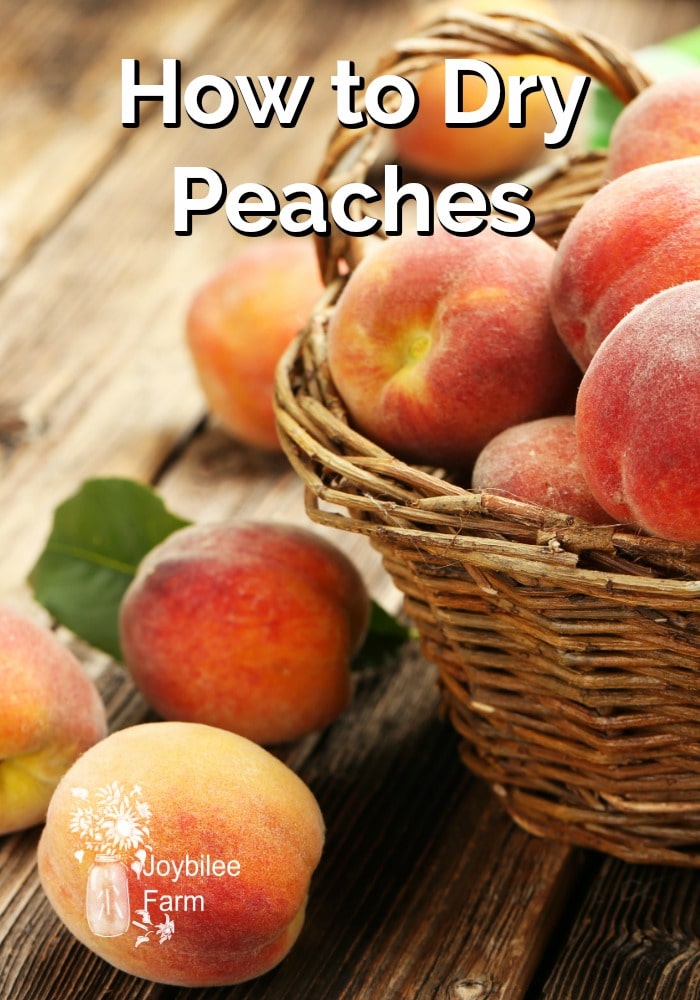
Dehydrator Recipes: How to dry peaches
Dried peaches are healthy snacks that are great for lunches, yummy in baking, and are good survival foods. They are easy to make at home, too, if you have a dehydrator. See my review of the Excalibur Food Dehydrator. That’s the model I recommend for family food drying. It will dry 20 lbs of fresh fruit or vegetables at a time. Smaller tabletop dehydrators are insufficient for serious food preservation.
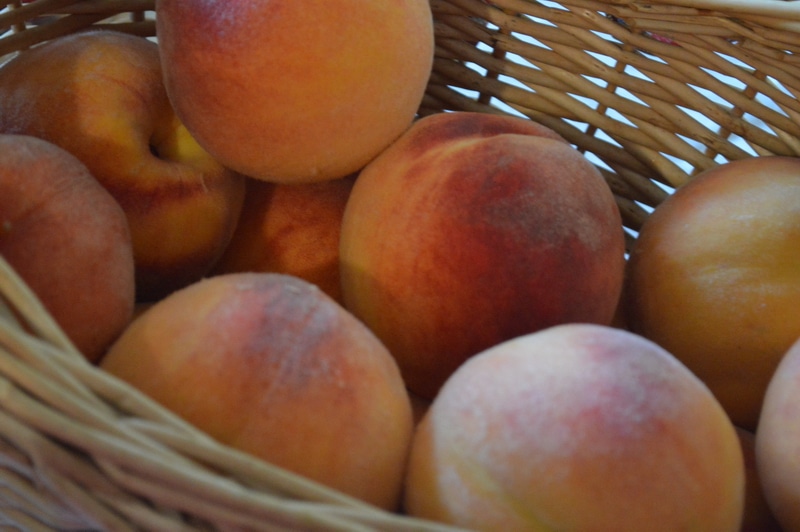
Equipment you’ll need:
- A dehydrator
- A large pot of boiling water
- A sink or tub of cold water
- A pairing knife
- A box of fresh ripe peaches
How to dry peaches
If your peaches are still green allow them to ripen at room temperature before you begin.
Blanch the peaches and slip their skins
Blanch the peaches 5 at a time in a pot of boiling water, for about 3 min.
Remove peaches from the blanching water and plunge into a sink of cold water. The skins will slip easily. Remove the skins and compost them. Reserve the peaches for slicing.
Slice peaches and remove the pit
That sounds straightforward. But when it comes to peaches there’s a little more to it.
Do you have freestone peaches or cling-stone peaches? What’s the difference?
There are two kinds of peaches cling-stone and free-stone. Clingstone peaches cling to the stone pit and are harder to separate from the pit. You may need to cut the pit from the peach flesh to separate it. Whereas free-stone peaches naturally separate from the pit as you slice them. Generally, the cling-stone peaches are harvested early in the peach season, near the end of July here in BC, and the freestone peaches are harvested later in late August and early September in BC. Most home canners prefer the freestone peaches but jam makers like the cling-stone because they are sweeter and slightly more flavourful. Midseason peaches, ripening in BC in mid-August are sometimes semi-free-stone. Semi-free stone is sweeter and more flavourful than free-stone, and easier to separate from the pit than cling-stone.
But “sweeter and more flavourful” is relative. Peaches picked close to ripening from the tree, are amazingly sweet and bursting with flavour regardless of whether they cling to their stones or not, when what you are used to is grocery store produce. So while cling-stone and free-stone are useful distinctions when you are buying your peaches at the farmer’s market, any box of ripened peaches at a good price will reward you with rich flavour and satisfy your craving for peach candy. Just know that cling-stone peaches take a bit more effort to work with.

These are freestone peaches. Notice how the centre of the peach is cleanly removed from the pit.
Slice your peaches
Slice the peaches into about 8 slices each.
I like to dip my peaches in lemon juice to prevent them from turning brown in the dehydrator. Lemon juice is an antioxidant and prevents the oxidation of the peach flesh. This step is optional.
Layout the peaches in a single layer on your dehydrator trays.
Turn on the dehydrator and dry according to your manufacturer’s instructions. With my dehydrator, I’ll dry them overnight. In the morning I reverse each tray, turning the back to the front, and then moving the upper trays to the bottom, and the bottom trays to the top. This ensures that the peaches are dried evenly.
How to tell when your peaches are done
Dry the fruit until it is fully dry. It will remain pliable but should not be squishy when you pinch it between your fingers.
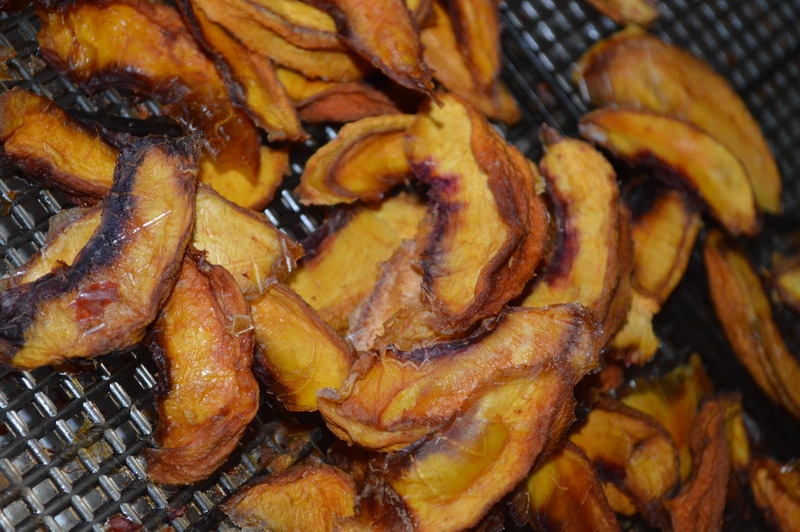
Now remove the peaches from the dehydrator trays and allow them to cool completely. Double-check each piece of fruit, to ensure that it is fully dry. If any are cold to the touch or feel squishy when you pinch them between your fingers, return those peaches to the dehydrator and dry for a few hours longer.
Turn down the heat so your peaches don’t turn black
Peaches are high in natural sugar. These natural sugars can caramelize in the peaches while they are drying, turning the edges of the peaches black. Notice in the picture how the peach slice on the left is turning black along the edges. The peach is still sweet and won’t taste burnt, but it isn’t as appetizing. You can avoid premature darkening and the caramelizing of the sugars in the peach slices, by turning the heat in your dehydrator lower. This will allow your peaches to dry more slowly but should prevent blackening, and caramelizing of the sugar in the peaches.
Place your dried peaches in glass jars for storage
When the peaches are fully dry and cool, package the fully dried peaches in a glass jar. Put a plastic lid on the jar and tighten it. Store in a cool, dry place. At Joybilee Farm we call dried peaches “peach candy” and believe me it is so much better than peach-flavoured candy. You will love having dried peaches in your food storage. Dried peaches are a very versatile addition to your food pantry.
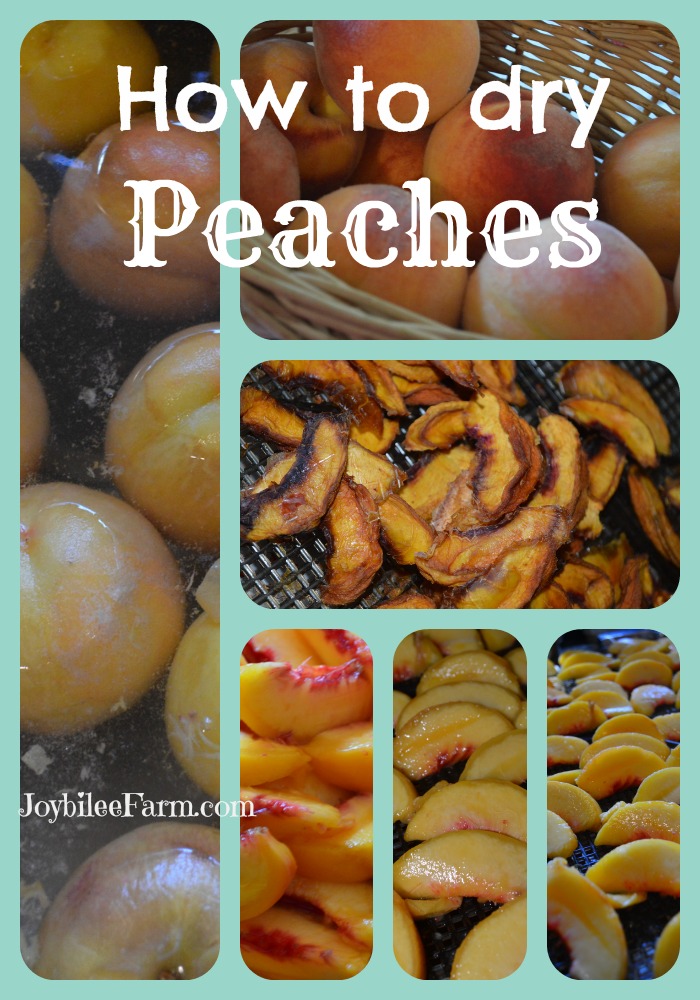
How To Use Dried Peaches
Using kitchen scissors, cut dried peaches into 1/4 inch pieces, add to muffins, cookies, trail mix, and granola.
Carry it with you on car trips as a healthy snack.
Add dried peaches to your survival food storage.
Add dried peaches to your hot oatmeal.
Use dried peaches as camping food, and hiking rations. They are lightweight, nutrient-dense, and easy to carry.
Reconstitute dried peaches by soaking them overnight in water. Drain. Eat like fresh peaches in a dish, topped with whipped cream or milk.


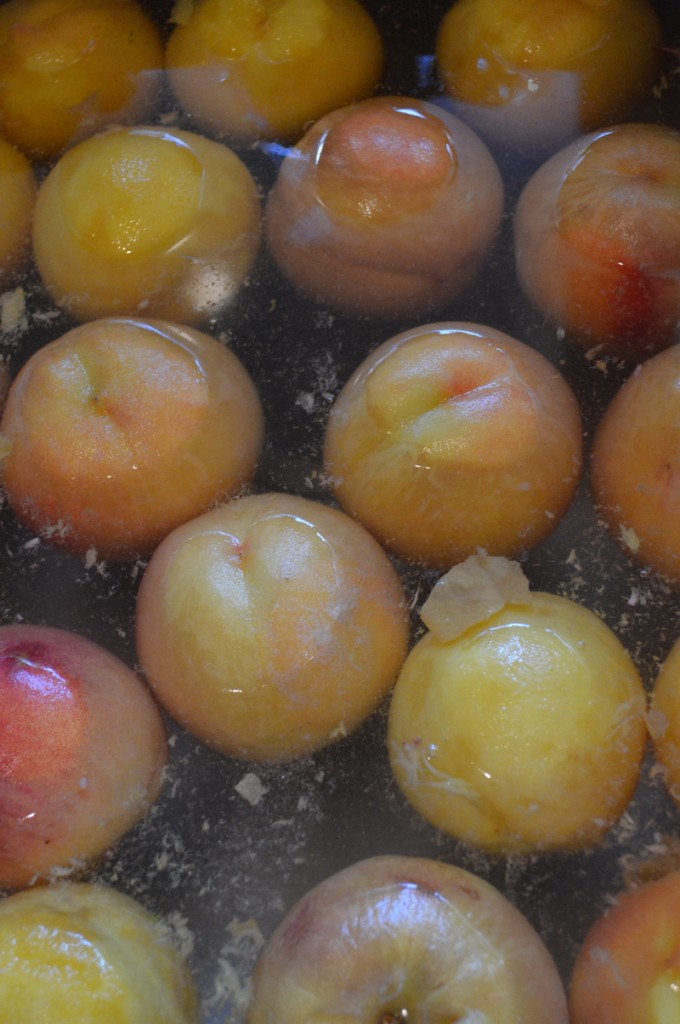
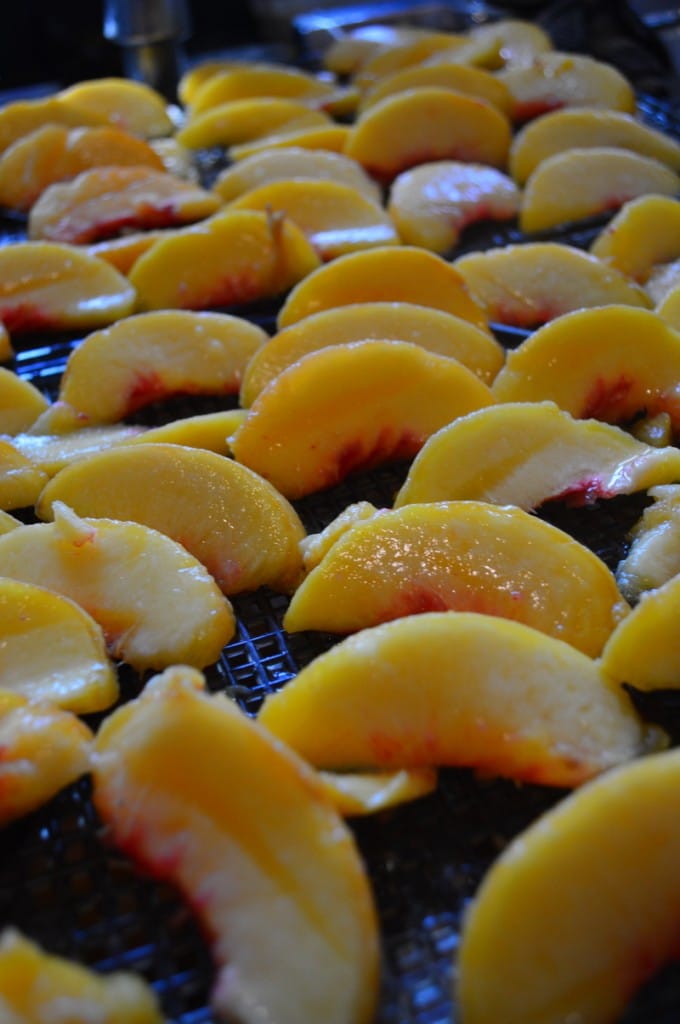

I’m curious why you say to compost the skins. I see most of your instructions utilize as much of the fruit as possible.